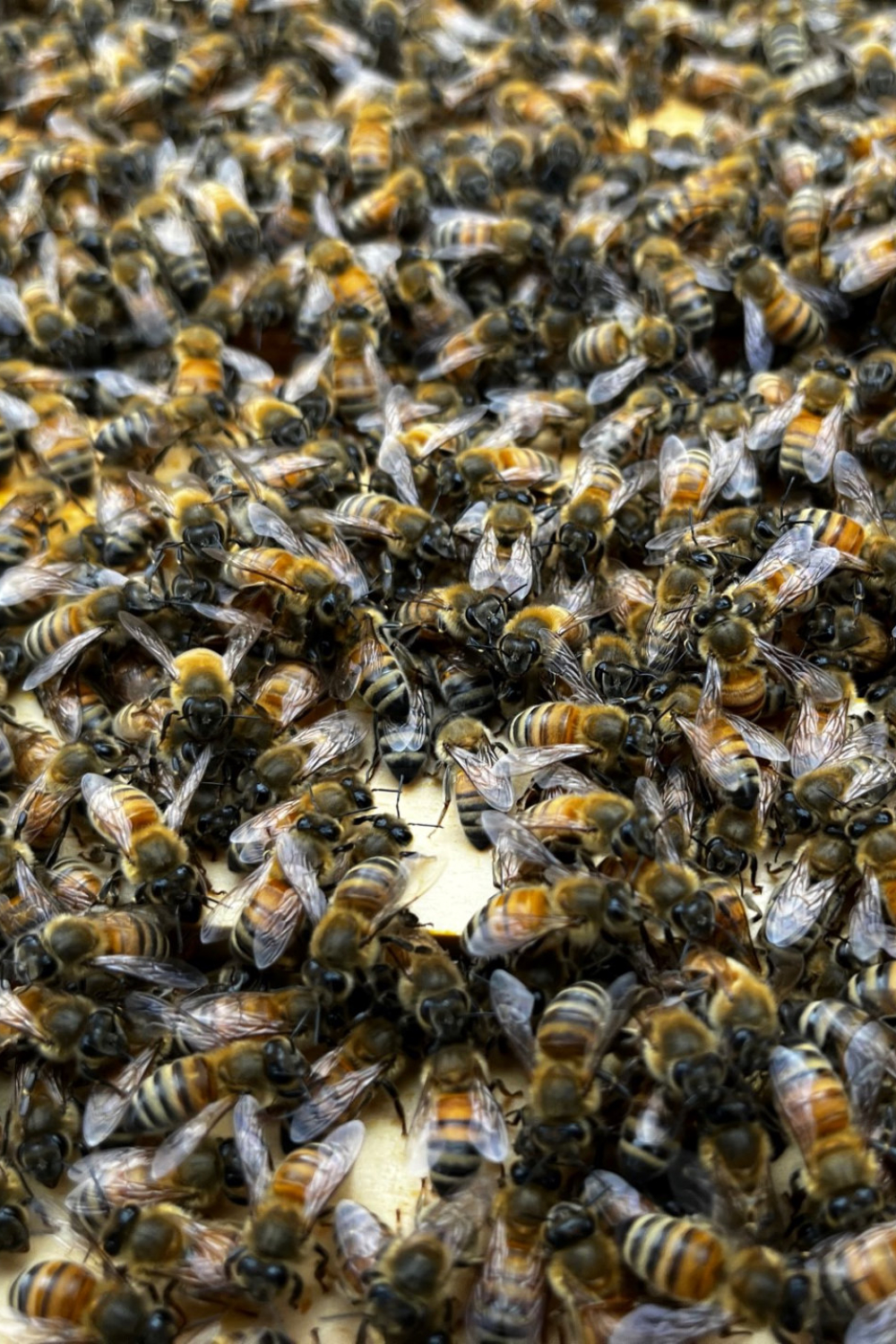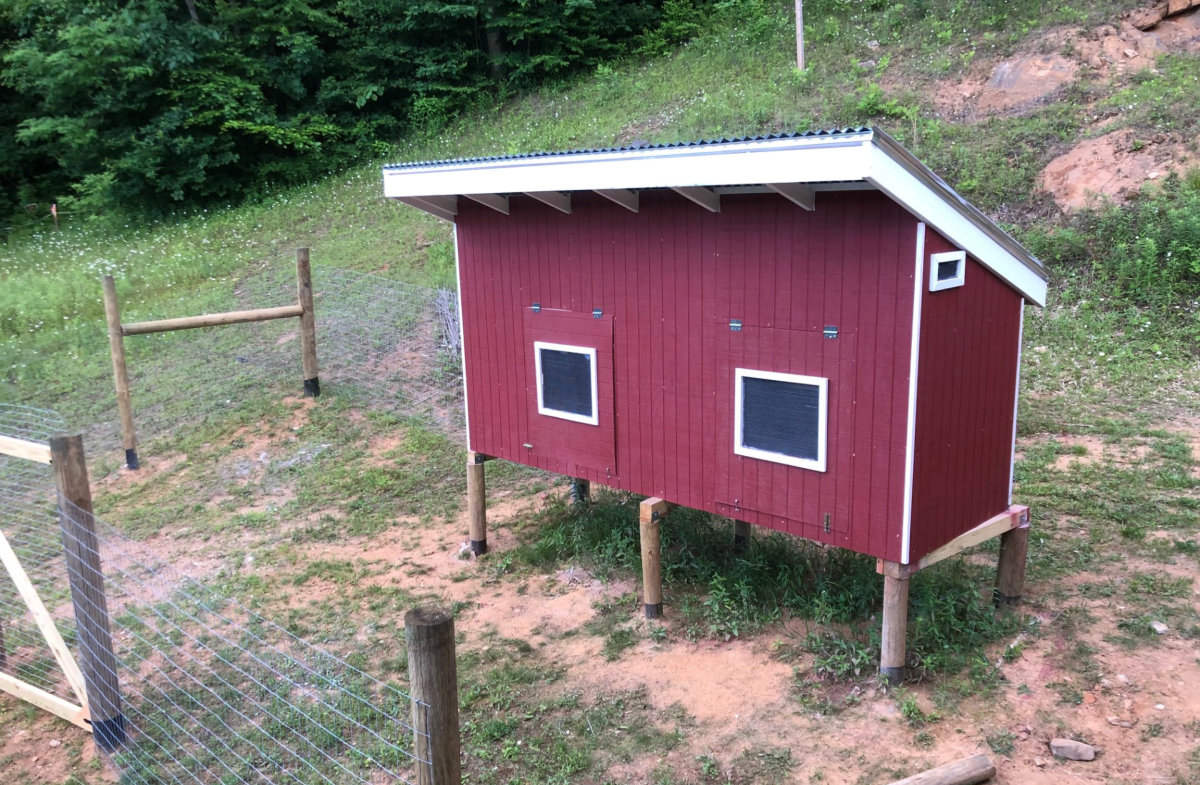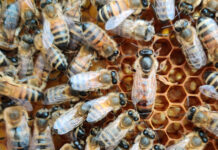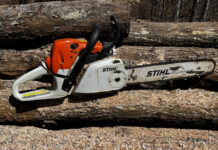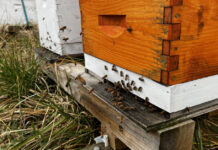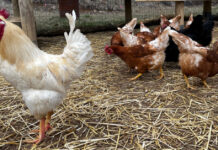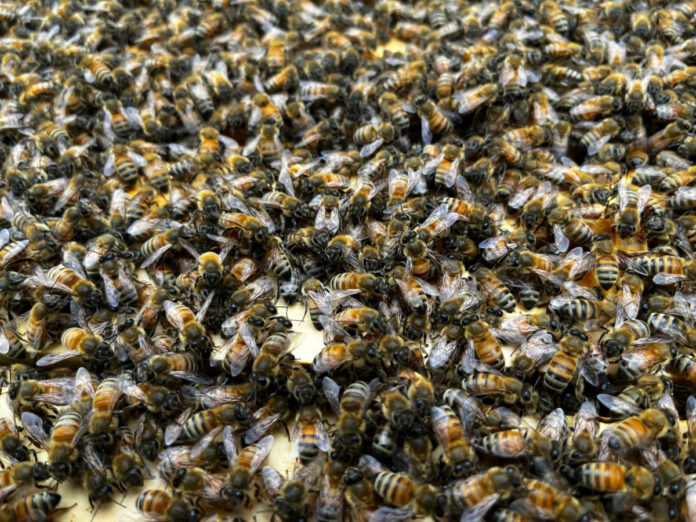
It’s been a bad year for beekeepers in this neck of the woods, or perhaps I should say, in our mountain community. Beekeepers from several counties got together for a regional meeting last week, and everyone was complaining about poor honey production.
It is frustrating to open a hive full of honey bees and see very little honey. I know they should be producing honey, and they know they should be producing honey, but there’s very little nectar to be found. I think our frequent rain washed away or diluted much of the nectar.
It’s a reminder that no matter how good a beekeeper you are, Mother Nature plays an important role in the success of your honey production.
While honey production is low, all my hives are in decent to very good shape. They all have queens. They all have mite counts below the threshold. A few even have plenty of pollen stored up. What I am not seeing yet is much honey.
We should have a summer honey flow starting in a few weeks. I will have to count on it to boost my harvest. Then in the fall, there will be the golden rod harvest. We have plenty of goldenrod, so as long as it blooms, the bees should be able to store up plenty of honey for the winter. That’s going to be a key to successfully over wintering.
Strange Hive
On my most recent inspection, I ran into an unusual situation. When I opened the lid, a bunch of drones flew out and circled around me. Now drones, the male bees, can’t sting you, so this was peculiar rather than worrying.
I checked the top super, and the bees were ignoring it. The super below had three frames that were half filled with honey. They also had a frame of capped brood, and half of it was drone brood. (Drone brood is bigger, and drones are larger than the worker bees.) When the drones hatched, they could not get through the queen excluder and leave the hive, so they were trapped in the top boxes. That’s why they were in a hurry to leave when I opened the box.
At first, I was afraid the queen had gotten trapped above the excluder, which happened to me last year, but that was not the case. There were lots of eggs and young brood in the hive bodies below.
I can only assume that one of three things happened:
- The queen somehow squeezed through the excluder, laid a frame of eggs, and then squeezed back through the excluder.
- A virgin queen on her mating flight returned to the wrong hive and used the upper entrance to get into the hive above the excluder.
- The queen pheromones from below were so weak that a worker bee in the upper box figured there was no queen and started laying eggs, what we call a laying worker. I don’t believe this is the case because at least half the brood was worker brood and I could see some workers emerging.
My bet is number one. It’s unusual bit not unheard of for a young queen to slip through an excluder.
Fixing the Problem
I did not see a queen in the upper box, but to be safe, I decided to shake all the bees into the lower box. With the queen excluder off, I shook each frame from the supers, knocking all the bees back down into the hive bodies. Then I re-installed the queen excluder and re-assembled the super. I also decided just to put one super one; they don’t need a second one yet. Having it on was just wishful thinking.
Now I just have to remember to open the hive every few days and let any of the newly hatched drone escape. They are too big to fit through the excluder.
Smart Beekeepers
At the meeting, I met some very smart beekeepers. I don’t know if beekeeping appeals to smart people, or if only the smart ones go to regional and state-wide meetings. What I can tell you is that this was an impressive group of people. It was also gray-haired. Very few younger people keep bees, which is a shame. Or maybe younger people have better things to do on a sunny weekend than go to a beekeeper conference.
Despite what looks to be less honey in our harvest than last year, I am still pleased with my investment in bees. Assuming whatever disaster caused a STHF situation doesn’t kill the bees, they should provide us with a useful sweetener, some much-needed calories, and a valuable trade good in a long-term SHTF scenario.
Another nice thing about them is that this time of year, I spend less than 90 minutes a week on their upkeep, and I have seven hives. As long as the electric bear fence is on, I can leave the bees on their own for a week or two and not worry about them, unlike the chickens which need food and water every day. That makes honey bees a good choice for people who travel on business or retired folks who want to take off for a week and see the grandkids.
Stored Food vs Raised Food
I know we are not going to be able to survive on honey, eggs, apples, berries, garden produce, and whatever wild food we can scavenge, but it should allow us to stretch our stored food. In a multi-year disaster, we’ll do our best to increase production of all the above, but the lack of large meat animals will hurt us and we’ll have to count on our stored food.
Unfortunately, not all of us have the space to raise animals that require pasture. We could raise rabbits, but not goats, sheep, or cows. I doubt we even have the space for pigs. For now, we’ll stick with chickens, bees, and canned meat.
